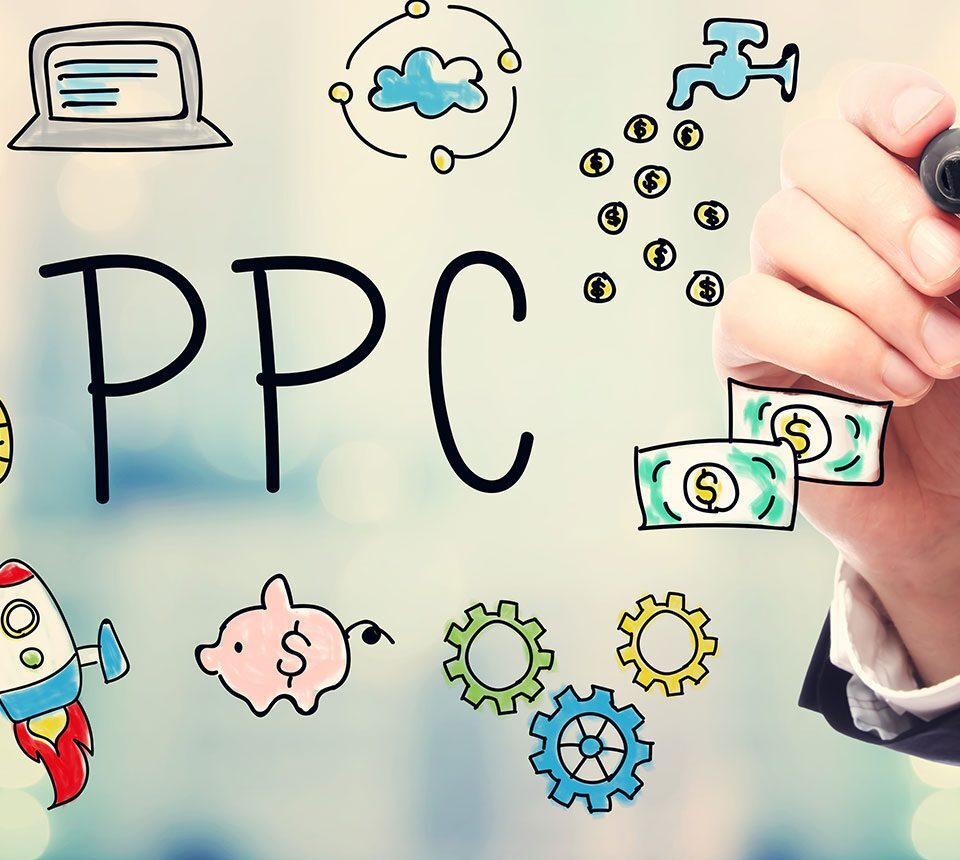Having been in the digital game for 8 years, I’m never usually surprised when analysing and auditing PPC accounts because, by this point, I’ve seen it all!
Whether it’s the basics that are being disregarded, the housekeeping tasks that are being overlooked, split testing not being utilised, or the general overriding strategy being wrong, there are always improvements that can be made.
In this blog, I will take you through some of the common mistakes I find when taking on new PPC clients and give you some handy inside info on how I go about making improvements and implementing quick wins.
Clearly Defined Business Objectives
It happens all too frequently that the internal business team and the paid search team are not always on the same page when it comes to the bottom-line objectives. It’s very important when taking on a new PPC client that you work with them to establish both broad and specific goals.
These objectives could be based on revenue, return on investment (ROAS), transactions, leads, reviews, downloads, landing page views, video plays, CTR, average CPC, conversion rate, etc. Establish whatever your client feels is of ‘value’ to them and gain insight into what will grow their business.
If applicable, you can then present different budget scenarios and give an indication of what you feel you can achieve with each.
Google Ads Goals
Now that you know what you should be working towards, you should do some goals and conversion sense checks to make sure that everything is being tracked properly.
If you don’t have clearly defined goals plugged into your Google Ads account, then your campaigns will have little chance of success. If you do have them plugged in, then you can set your campaigns to optimise towards specific objectives, making the life of a paid search practitioner that much easier.
Historical Data Analysis
There’s so much juicy detail to extrapolate from previously running Google Ads campaigns (man, I love data!) which, once analysed, give us answers to the following questions:
- Which keywords are the most vital? Which keywords can be stripped away to save money?
- Is there wasted spend in the search terms report? Can we bulk upload a new negative keyword list from this?
- Which campaigns have achieved the most conversions? Or the lowest CPA?
- What’s the impression share of the campaigns? Are they limited by budget?
- Which ad combinations perform the best? Which headlines and descriptions have the highest CTR?
- Which ad extensions are getting the best results? Which are not?
- Which users are most likely to convert? How old are they? What is their gender? Where are they situated? What are they interested in? What devices do they use?
- What time of day or day of week will conversions likely occur?
Getting answers to all these questions will allow you to strategise much more effectively moving forwards.
Budget Allocation
One of the quickest PPC wins is simply the reallocation of campaign budget once the above analysis has been carried out.
Perhaps the findings will show a non-brand campaign that is pulling in the exact type of user you need, compared to another one that is showing extremely low conversion rates and a high wasted spend.
In this scenario I would suggest bolstering the budget of the successful campaign while pausing the other one.
If you are running brand campaigns as well as non-brand, then it is worth testing the impact of pausing your brand campaign and instead concentrating all your budget on prospecting new users.
This is because a high percentage of your brand campaign traffic and conversions will find you and convert via another channel, such as direct or organic instead. In turn, this could save you the money for the brand click and allow you to reallocate the budget into non-brand.
Keyword Match Types
It’s important to analyse which keyword match types are being used, especially now we know that BMM keywords are being phased out.
Exact match keywords should be mainly used throughout the account, as this gives you the ultimate control over what triggers your ads.
Consider using Phrase match keywords when you are struggling with traffic levels for an ad group. Do keep an eye on search term reports when they are active though.
Once a search term generated from a Phrase match keyword is established as positive, consider converting it into an exact match keyword.
Audiences
You may be surprised to find that many of the PPC accounts I scrutinise are not properly utilising prospecting audiences or remarketing lists.
I advise that you always add a range of relevant in-market audiences for ‘Observation’, as well as your remarketing lists.
Using Observation rather than Targeting means that your campaigns will start to gather campaign information just regarding the audiences you are tracking, like clicks, impressions, conversions etc. If you choose Targeting, then you will only show ads to those audiences, no one else.
You can then make changes based on the data from the observed audiences, by modifying your bid to be higher or lower for a particular audience. Or perhaps you’ll want to create a new campaign targeting just that audience, allowing you to have a specific budget applied to it.
Ad Copy
Your ad copy is what defines your brand and what can make you stand out amongst your competitors. There are a few basic techniques you can use to get (and stay) noticed.
It’s important to keep up to date with your ad copy by never letting it go stale. It’s amazing how often advertisers will create ads and just run with them for years. Being seasonal allows you to appear more relevant and update your ads more often.
Your ad copy should be tightly themed to the keywords within the ad group. Diverging from this will result in lower CTR’s, a lower ad rank, quality score and landing page relevance.
You should always try to include a CTA in your ad copy, as it will influence users either consciously or sub-consciously.
Ideally, you’ll want to have 1 Responsive Search Ad and 2 Expanded Text Ads in each ad group. Responsive ads offer you the ability to enter up to 15 headlines and 4 descriptions, and they are dynamically served based on performance.
Another great feature is that you can pin your headlines to either position 1, 2 or 3, giving you great control.
By adapting your ad’s content to more closely match potential customers’ search terms, responsive search ads may improve your campaign’s performance.
A way you can go about creating the ad copy effectively would be to generate a unique and descriptive Responsive Search Ad for each ad group, utilising as many relevant headlines and descriptions as possible.
Once enough time has passed and enough data has been collected, you can analyse the best combinations of headlines and descriptions in order to design your expanded text ads.
Finally, I see all too often that the expanded text ads are not being split tested against one another. Now that you have chosen your expanded text ad copy from the responsive ad combinations, make sure to keep an eye on their performance.
If there is a clear winner (in terms of CTR, average CPC, conversion rate etc) then consider pausing the loser and creating a new ad to test the winner against. Rinse and repeat this process at least every 6 weeks for fully optimised ads.
Campaign Structure – Improving Ad Rank & Quality Score
As mentioned previously, within your ideal campaign structure, you’ll want to have tightly themed keywords and tightly themed ads in each ad group.
Many accounts I’ve had the privilege to audit seemed to have missed the memo here! Sometimes I’ve found brand and non-brand keywords in the same campaign or ad group, and other times the diverse range of non-brand keywords have just been lumped into one campaign, or even worse… one ad group.
By looking to restructure the keywords and ads into themes, it will allow the AI to learn about and optimise the campaign more quickly and effectively.
It will also allow you to analyse and digest results a lot more easily, and to designate specific budgets to campaigns and keywords that work well.
Once everything is structured in a sensible way, you will start to notice that not only will your KPIs (such as CTR) start to improve and your average CPC start to fall, but also your Ad Rank & Quality Score will start to see improvement.
This will allow you to show more prominently than your competitors with worse scores than you, and for a cheaper CPC on average!
Bidding Strategies & Campaign Experiments
In the past couple of years, Smart Bidding has become more pivotal than ever when it comes to Google Ads. If you want to run successful campaigns, then you must learn the ins and outs of all the smart bidding strategies.
Google is constantly encouraging us marketers to utilise smart bidding strategies as much as possible, while moving away from the traditional CPC model. This is because of just how ‘smart’ they are becoming.
These strategies reduce so much of the day-to-day tasks that we used to have to worry about as PPC marketers, meaning we can concentrate on the things that the AI just isn’t that good at, like designing new ad copy and ad extensions, expanding campaigns with new keywords and targeting, making hypothesis from data analysis, and setting up campaign experiments.
Campaign experiments provide you with the ability to split test components at campaign level. You can create a duplicate of a campaign, make the change or changes that you want to test, and finally set the test live. The experiment will then split the traffic 50/50 until your defined end of test date.
This great feature allows you to test different bidding strategies on your campaigns, as well as lots of other things, including; targeting, demographics, keywords, match types, time of day, day of week, audiences etc.
I advise that you work your way through the bidding strategies with 1-month tests on each relevant one. I would always advise not to run too many campaign experiments at once though, maybe one or two.
Conclusion
PPC provides a huge opportunity for small and large business, and everything in between.
However, it has become more and more apparent to me that most PPC accounts are poorly optimised and are vastly underperforming. Often, this is down to companies running their PPC marketing in-house without any real experience.
By learning how to set business objectives and goals, import them into your campaigns, properly use targeting, use the correct keywords and match types, sift through search query reports, write ad copy that converts, split test ads and bidding strategies efficiently, and get to grips with improving Ad Rank & Quality Score, you’ll be well on the way to improving your PPC account.
The quick wins mentioned in this article are not, of course, the be-all and end-all of PPC optimisation, but they should get you on the right track and lead to some speedy improvements.
The paid search experts at Coast Digital are well prepared and know exactly how to set up and effectively manage paid social accounts. If you would like to discuss what we can do for you and your business, give us a call today on 0845 450 2086.
Let's collaborate
Partner with us
Let’s work together to create smarter, more effective solutions for your business.
Related blogs
Who we are
Explore how our culture and expertise fuel digital innovation
Join us








